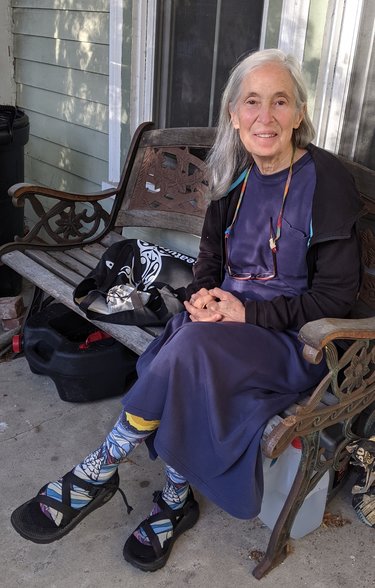Litten speaks out about the dangers of plastic grass
“We’ve only got one planet,” says Edna Litten. “We’ve got to take care of it.”
Litten, who grew up in Queens and lives now in Altamont, remembers going to a teach-in for the first Earth Day in 1970.
Since then, over the last half-century, she has hung her laundry out to dry; she’s never owned a clothes dryer. She and her husband were early installers of solar panels at their home and are avid composters for their garden. They eat little meat and drive an electric car; they joke that their old Prius, a hybrid, was a gas-guzzler.
“It hasn’t felt like a sacrifice or a painful thing,” says Litten in this week’s podcast.
She recently took an online course taught by Judith Enck, formerly a regional Environmental Protection Agency administrator, now at Bennington College in Vermont.
Enck encouraged those who had taken her course, Beyond Plastic Pollution — some of her students are from foreign countries — to take action at home.
Litten is part of a local group focusing on the dangers of synthetic turf and she notes that Enck calls it plastic grass.
As The Enterprise has reported at length over the last several months, part of the Guilderland school district’s proposed $21.8 million capital project includes a $2.5 million plan to build a synthetic playing field at the high school. The public vote on the project is Oct. 7.
In July, athletes, coaches, and sports boosters spoke enthusiastically to the school board about the need for a turf field. David Austin, the district’s director of Physical Education and Athletics, said, “I don’t think it’s a luxury. We’re at a disadvantage.” He said that, before the year is out, 10 of the 15 Suburban Council schools will have turf fields, which puts Guilderland players at a disadvantage.
Austin estimated that about 1,450 students in grades 9 through 12 would benefit from the new field during their physical-education classes. He said about 800 student athletes would benefit each year. This includes students who participate in soccer, field hockey, football, baseball, softball, lacrosse, or track and field. Austin also said the community at large would use the field for summer camps, youth sports, and sectional events.
“Keeping kids healthy and uninjured is more important than how many games the football team wins,” said Litten.
She cites research to explain a number of health, safety, and environmental concerns.
After 15 years or so, turf fields, with infill made from chopped-up automobile tires, have to be replaced, Litten says, and yet there is only one facility, in Denmark, that recycles the turf; piles can be seen from space, she said.
The Massachusetts Department of Environmental Conservation reports that polyfluoroalkyl substances (PFAS) can leach out of plastic turf and into the environment.
Litten also names heavy metals, like lead and arsenic, as well as volatile organic compounds (VOCs) coming from the synthetic turf.
She mentioned videos that show “little black clouds” around athletes’ feet as they play on the fake fields, which she said indicate airborne particles can be inhaled.
In 2011, the New Jersey Department of Environmental Protection offered free tests for schools on these aerosolized particulate compounds but were turned down by the schools because, Litten said, they did not want to be exposed to liability or to have to replace the fields.
She notes that exposure to lead can cause lifetime damage to children and finds it “dismaying” that schools wouldn’t measure lead contamination from their synthetic turf fields.
Litten also notes a statement last year from the National Football League that, from 2012 to 2018, players suffered 32 percent more knee injuries and 69 percent more foot and ankle injuries, playing on plastic grass rather than real grass fields. The pros want to play on natural grass instead.
Further, Litten raised concerns about global warming, since real grass takes in carbon dioxide and releases oxygen while plastic grass does not.
In the sun, she said, synthetic turf can be hotter than asphalt, causing players to be burned and increasing the risk of heat stroke.
Litten concluded, “One of the things grown-ups are supposed to do is take care of kids.”


